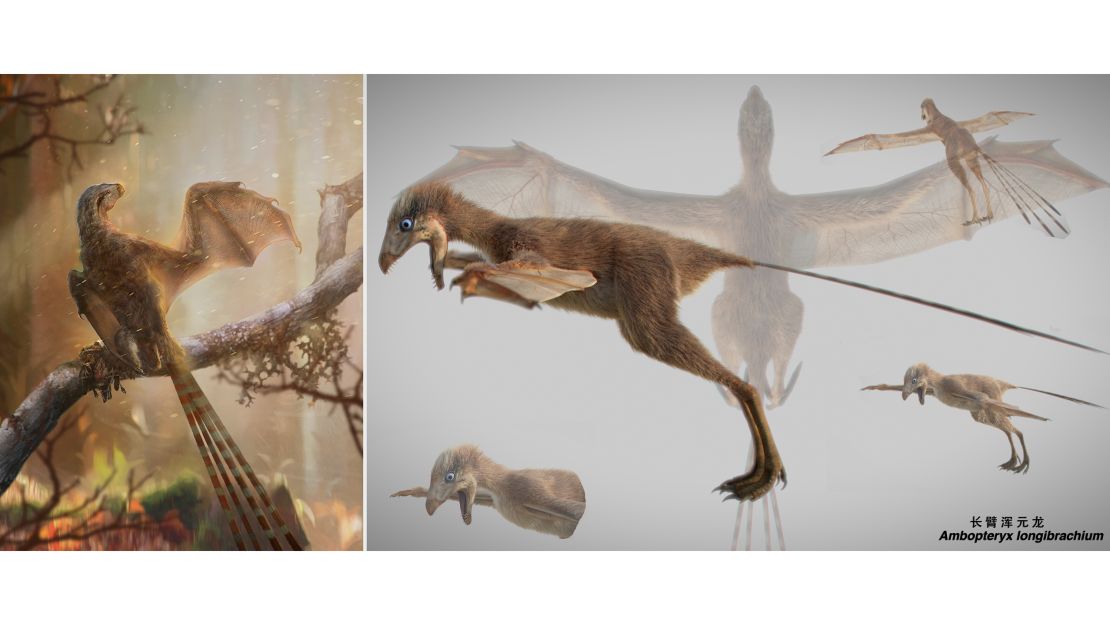A new species of dinosaur with bat-like wings has been discovered in China, shedding light on the origin of flight and how dinosaurs evolved into birds.
The dinosaur’s fossilized remains were found in Liaoning, in northeast China, in 2017 and at first they confused Min Wang, a Chinese paleontologist and lead author of a study published this week describing the new dinosaur. It’s called Ambopteryx longibrachium.
“It was nothing like a bird. Nothing like a dinosaur,” Wang said. But further study showed that it was in fact a tiny therapod dinosaur with unique forelimbs and membranous wings.
The 163 million-year-old fossil is only the second to show a dinosaur with bat-like wings although the feature is seen in prehistoric flying squirrels, bats and pterosaurs – flying reptiles.
The only other dinosaur with this feature was the Yiqi, which was described in 2015, and was hotly debated by paleontologists.

“Some people were not convinced by Yiqi. Soft tissue is not easily preserved in fossil record,” Wang added.
Wang said the soft tissue discovered in the Ambopteryx fossil provided more evidence for bat-like flight.
However, Wang says it’s unlikely that the tiny dinosaur, which would have been 32 centimeters (about 1 foot) in length and weighed about 306 grams (10 ounces), would have been able to flap its wings.
“I would vote for gliding flight. The most important feature is that it doesn’t have flight muscle – the sternum – that would have allowed it to flap its wings.”
Both the Yiqi and Ambopteryx belong to a small family of dinosaurs called scansoriopterygids.
China has been at the forefront of many of the latest dinosaur discoveries, particularly of feathered fossils that have shown a direct link between dinosaurs and birds.
Many of the most dramatic discoveries have been made at the fossil site where the Ambopteryx fossil was found – in Liaoning province.
Here, 100 million years ago, dinosaurs died en masse, caught up in a massive series of volcanic eruptions, leaving behind a treasure trove of exquisitely preserved fossils with a level of detail seen at few other sites.
Wang says that the bat-like membranous wings were likely a failed evolutionary experiment with flight given that later flying dinosaurs all featured feathered wings.
“So far, all known scansoriopterygids are from the Late Jurassic – this unique membranous wing structure did not survive into the Cretaceous,” he said.
“I hope we can find more of these dinosaurs to learn about the dinosaur bird transition and the evolution of flight in dinosaurs,” he added.































































































































































